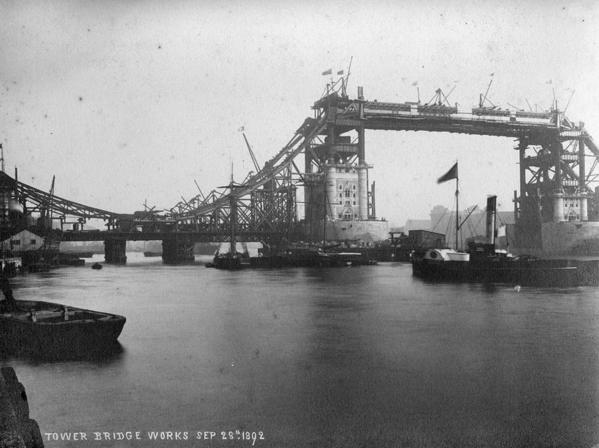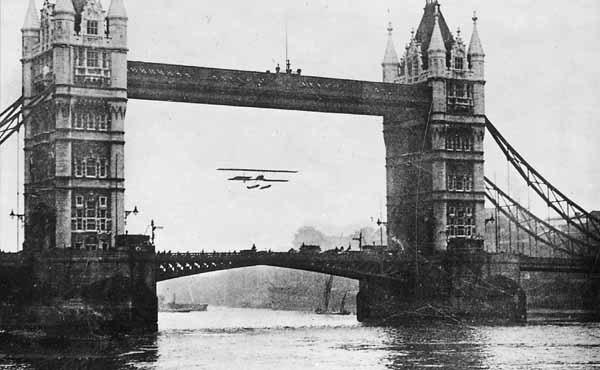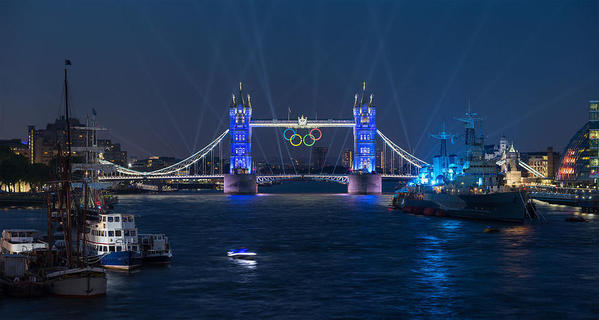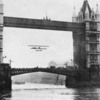The world is full of famous bridges, but only a few are so universally recognized that they can symbolize their city with no further explanation. Only three come to mind for me: the Brooklyn Bridge, the Golden Gate, and certainly London’s Tower Bridge.
 Photo: Colin / Wikimedia
Photo: Colin / Wikimedia
That said, it’s worth reminding that Tower Bridge is not London Bridge, although questions about that keep popping up on TripAdvisor and other sites. Actually, it’s rumored that the developers who bought and moved the 1831 London Bridge to Arizona made that mistake, too.
Tower Bridge is a fooler in another way. Its massive stone towers make it seem much older than it is, and many visitors are astonished to find that it’s only just over 100 years old.
Those are not the only surprises, though. I’ve been over the bridge numbers of times without every realizing what an amazing machine it is, and how much engineering and science went into making it work. But this year’s visit to its Tower Bridge Experience changed that, giving us a chance to see the inside as well as the outside.

Construction photo from 1892 reveals the bridge's modern structure
In the late 1800s, when the bridge was built, it had to solve a set of problems: It had to open for shipping, it had to allow pedestrians to cross even while open, and it had to harmonize visually with its neighbor, the 1000-year-old Tower of London.
The design that was chosen, by Sir Horace Jones, the City Architect and engineer, Sir John Wolfe Barry used the massive stonework to complement the tower, two giant bascules to lift the roadway and open the shipping lane, and an overhead walkway for pedestrians.
The towers not only house the mechanism that opens and closes the bascules; they are also part of the two suspension bridges that connect them to land.
The current red-white-blue color scheme was added for the 2012 Jubilee
Beloved as it is today, it wasn’t to everyone’s taste. When it opened, one critic said that "It represents the vice of tawdriness and pretentiousness, and of falsification of the actual facts of the structure", and another said that “A more absurd structure than the Tower Bridge was never thrown across a strategic river.” Pretty mild, though, compared to the abuse thrown at the Eiffel Tower.
That's me, lying on the glass floor of the upper walkway, with water below
The Tower Bridge Experience, which gets you inside the works, became possible through two big changes in the bridge: the 1974 change to modern electric engines to open the bascules, and the rebuilding and re-opening of the upper walkways. The walkways had been closed for years—Victorian and later pedestrians weren’t fond of climbing up to them. In the renovation the stairs were replaced by elevators.
But the TBE is not the only amazing experience Tower Bridge has had, starting with Frank McClean’s flight between the towers in 1912, part of an escapade that included flying under all the other bridges as far as Westminster. On the way back, though, he tried to go under Tower Bridge’s lower roadway; a wind burst put him in the water.

For the 2012 Olympics, the bridge was transformed into a giant advertisement, with Olympic rings hung from the upper walkways.

But the most spectacular experience belongs to Albert Gunter, a London bus driver. In December 1952. As he drove his double-decker bus across the bridge, the bascules began to open without warning. To avoid falling into the gap, he accelerated the bus and landed on the opposite side, which had only started to rise. Amazingly, the bus landed upright, and none of the passengers suffered serious injury. No pictures of that, though!
Inside the towers are not only the elevators, but dramatic stairways that once led to the upper walkways, with exhibits and historic photographs.
Once across the bridge to the southern side, there's an entrance to the other jewel of the Experience: the Victorian engine rooms. While modern electro-hydraulic systems have replaced the original steam engines and hydraulic accumulators, etc., the old equipment is still maintained, and could be restored to service if needed.
The old equipment is beautiful not only in its currently-painted and maintained state, but also for the sense of the power it produced for the hard work of making the movement of the bascules seem delicate and effortless. Of course, economy-minded folk will point out that the newer systems require hardly any human operators...but is that really a benefit?
Automatic oilers kept the system running smoothly
This giant hydraulic piston was the heart of the accumulator tower.





Comments (3)